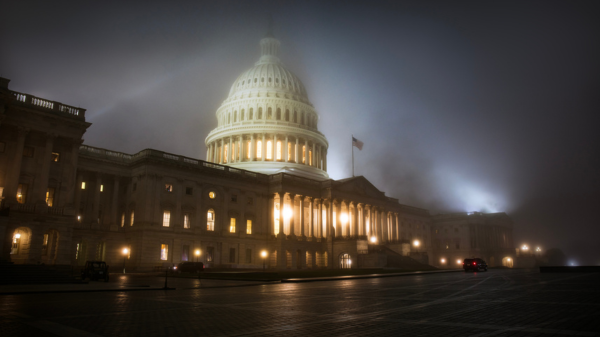IN THIS ISSUE:

Nearly a decade ago Congress considered two pieces of legislation that would have fundamentally altered the way regulations are adopted, defending personal and economic freedom in the process.
One of the laws, the Regulations of the Executive In Need of Scrutiny Act (REINS Act) would have put Congress back in the driver’s seat on regulations, reestablishing the constitutional separation of powers under which Congress alone was delegated the power to write law. The second law, the Secret Science Reform Act, would have improved the practice of science used to underpin regulations.
Combined, the laws would have benefited the economy and the nation’s people by better ensuring the science used to justify regulations was top-quality, tested, and verified, and that regulations produced benefits in excess of their limits on individual freedom and in excess of their economic impact. Importantly, if REINS were adopted, Congress could be held accountable for any major regulation after it became law. The legislature couldn’t blame faceless, unaccountable bureaucrats when people were angry about a new regulation and any harms they perceived it as imposing.
Unfortunately, despite support from first-term President Donald Trump, neither bill reached his desk for a signature.
Although I haven’t heard anything about the resurrection of the Secret Science Reform Act, it seems Republicans are attempting to insert REINS-type provisions into the “Big, Beautiful” energy, tax, and spending omnibus bill being developed in the U.S. House of Representatives.
The importance of the REINS Act can’t be overstated. The tens of thousands of new regulations imposed by unaccountable agencies each year limit individual liberty and choice in myriad, often unrecognized ways. Regulations are hidden taxes, draining trillions of dollars from individual households and businesses every year, representing the largest single fiscal burden on the economy outside of individual and corporate income taxes.
According to Politico, Republicans are working under the radar to get a filibuster-proof REINS provision in the mega-bill working its way through the House. Politico describes the effort as follows:
Conservative Republicans have spent more than a decade working toward a wholesale rollback of federal regulations—and now they think they have the legislative battle plan to make it happen.
Advocates of the rule-shredding proposal are seeking to give their legislation a coveted spot in the GOP’s party-line energy, tax and border security megabill, a maneuver that would defuse the filibuster threat that has repeatedly thwarted their dreams. …
The proposal would turn Congress into a gatekeeper for certain major rules and allow lawmakers to roll back countless regulations for the remainder of President Donald Trump’s term, drastically transforming the way the federal government oversees everything from businesses and banks to health care and energy development. The House Judiciary Committee advanced it last week as part of the Republicans’ broader budget reconciliation package—a potentially major step toward finally catapulting the deregulatory proposal to Trump’s desk.
“For those who say it would make a radical change, a radical departure from the status quo of rulemaking, I’d say, ‘Thank heaven above for that,’” said Senate Energy and Natural Resources Chair Mike Lee (R-Utah).
Politico’s pejorative description of the provisions—“rule-shredding” and a “wholesale rollback of federal regulations”—are unjustified. A sober and honest analysis would describe the provisions as forcing Congress finally to take responsibility for the regulations developed by executive agencies purported as detailed mechanisms executing the laws Congress itself passed. Under the REINS provisions, if Congress disagrees with an agency’s interpretation of what a law requires or imposes, Congress’s interpretation will reign supreme, allowing it to block regulations the body disagrees with from becoming the law of the land.
In a Washington Times editorial from 2017, I described the original REINS act as follows:
… an antidote to the disease of overregulation currently ailing this economy. While some regulations may protect human health or the environment, many—especially in energy and environmental policy—provide no or minimal measurable benefits while imposing huge costs. The rules are designed to expand the budgets and power of bureaucrats and are simply “make work” that create lifetime employment for agency staff.
Unfortunately, past Congresses found it easy to delegate lawmaking power to executive agencies. Congress gets credit for passing vague, feel-good laws, leaving the hard details of writing the rules and enforcing the laws to administrative agencies. When agencies go overboard, members of Congress typically wash their hands of the affair, claiming they never intended for a negative outcome and assailing the agency for going beyond what lawmakers intended.
Of course, Congress previously gave itself the power to review and block major regulation retroactively for a limited period of time through the Congressional Review Act (CRA) of 1996, but it has rarely used that power, and when it has, its efforts have most often been blocked by a presidential veto. The CRA allowed the House and the Senate to pass resolutions of disapproval to block major regulations. Despite tens of thousands of regulations being enacted in nearly 30 years since the CRA passed, Congress has used it successfully to overturn rules only 20 times.
The superiority of the REINS Act to the CRA is clear: under the CRA, a regulation becomes law by default unless Congress moves to disapprove it. The REINS Act would reverse this, canceling any major regulation Congress does not explicitly approve. In addition, the president would not be authorized to ignore the will of Congress and its interpretation of what the law it has written demands, because no veto is available. The rule doesn’t become law unless Congress approves.
As described by Politico, the REINS provisions House Republicans are trying to insert into the reconciliation bill are even more expansive than the original REINS legislation. For instance, the new version reportedly would force agencies to submit some previously adopted rules to Congress for approval. Rules that Congress doesn’t explicitly approve would sunset. Politico writes,
The proposal would require any “major rule that increases revenue” to be approved via a joint resolution of the House and Senate before taking effect. It would also allow lawmakers to retroactively terminate countless rules that federal agencies have already implemented by requiring them to submit them to Congress for review. Rules that Congress does not approve would automatically sunset.
The legislation would also allow Congress to repeal numerous recently finalized regulations through the use of a single resolution rather than repealing them one by one, as is current practice. …
Supporters say lawmakers need to be able to sign off on certain agency regulations in order to check the executive branch’s broad powers and ensure increased congressional oversight over rules that have significant impacts on individuals and industry.
In the end, I argued before and I still believe that the REINS Act could be the single most beneficial law Congress could adopt in defending the Constitution, upholding individual choice, and advancing economic certainty and progress. Congress and only Congress was given the power to regulate interstate commerce. It didn’t jealously guard that power before now; it should do so going forward.
Sources: Politico; The Heartland Institute; The Heartland Institute; Climate Change Weekly

Active Forest Management Better for Forests, Drought
A recent study by researchers at universities, government laboratories, and scientific institutes in Nevada (the lead author), California, Maryland, North Carolina, and Washington finds increased logging combined with tightly managed controlled burns could increase the amount of moisture in the soil, streamflow, and stored water, improving forest resiliency and water availability during droughts.
I have long advocated active forest management, including permitting increased logging to suppress wildfires, improve forest health and regeneration, and advance U.S. timber independence. However, I have never written about or even considered much the impacts of active forest management on water availability and moisture conditions. Other researchers have.
In particular, a study published in the journal Water Resources Research found thinning forests to a more natural condition—that is, removing trees from overgrown forests—can improve water yields by between 8 and 14 percent during droughts, and in some locations at some times local streamflow could be increased by nearly 20 percent in dry years.
The research team examined forest and water trends in the Sierra Nevada basin, using a distributed process-based hydrological model (DPBHM) which simulates hydrological processes across a basin by dividing it into numerous cells. The DPBHM they used was updated with information from vegetation maps from a distributed forest ecosystem model. The combined output of the models improves understanding of soil moisture, water capture and storage, and water flow.
As reported by lead author E. N. Boardman of the University of Nevada-Reno, water yields increase through two mechanisms.
“When forests are thinned, either through prescribed burning or mechanical removal, less rain and snow is intercepted and lost in the tree canopy, and more reaches the ground, Boardman said,” reports Nevada Today. “Snow and rain captured by the tree canopy is likely to evaporate, while snow and rain that reaches the ground is more likely to feed water to streams.
“At the same time, removal of some large trees reduces the demand for water. Fewer trees, after all, require less water, and thus runoff increases,” Nevada Today continued.
The excess runoff can help alleviate water shortfalls for farmers and residents in cities during times of drought, the study states:
In a fully restored disturbance regime that includes fire, thinning, and insect mortality, reservoir inflow increases by 4%–9% total and 8%–14% in dry years. At sub-watershed scales (10–100 km2), thinning dense forests can increase streamflow by >20% in dry years. In a thinner forest, increased understory transpiration compensates for decreased overstory transpiration. Consequentially, 73% of streamflow gains are attributable to decreased overstory rain and snow interception loss. … Uncertainty in future precipitation causes high uncertainty in future water yield, but the additional water yield attributable to forest disturbance is about five times less sensitive to annual precipitation uncertainty. This partial decoupling of the streamflow disturbance response from annual precipitation makes disturbance especially valuable for water supply during dry years. Our study can increase confidence in the water resource benefits of restoring historic forest disturbance frequencies in the central Sierra Nevada mountains, and our modeling framework is widely applicable to other forested mountain landscapes.
Whether it is to improve ecosystem conditions, enhance wildlife habitat, reduce catastrophic wildfire risk, increase timber production and revenues, or provide more-secure water conditions, active forest management, including logging as a integral part, is a win-win for people and the environment. In addition, such management would reduce emissions of pollutants and CO2 from wildfires.
Sources: Water Resources Research; University of Nevada-Reno

















